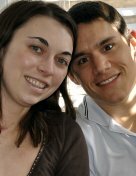234 Goodman Street, Cincinnati, Ohio 45219 | (866) 941-UCNI (8264)
Cerebrovascular Center
Primary links
Signs & Symptoms of Stroke - FAST
The best way to treat a stroke is for people to learn what to recognize using FAST:
F — facial numbness or weakness, especially on one side.
A — arm numbness or weakness, especially on one side.
S — slurred speech or difficulty speaking.
T — time to call 911.
Other symptoms of stroke also may include: severe headache, dizziness, loss of balance, loss of vision or double vision. Surprisingly, pain is not a frequent symptom of stroke.
Press Releases
Links
- UC Neuroscience Institute
- University of Cincinnati Physicians
- University of Cincinnati College of Medicine
- Drake Center
- Lindner Center of HOPE
- Mayfield Clinic
For patients with concern about their risk of stroke
About Strokes
A stroke -- also known as a "brain attack" -- is the leading cause of disability and the third leading cause of death in the United States. If you have been told that you are at risk of having a stroke, or if you are concerned that a loved might be at risk, the University of Cincinnati Neuroscience Institute can provide the answers you need. Although age is a risk factor for stroke, a significant number of strokes occur in people under the age of 65.
Strokes are either hemorrhagic or ischemic. A hemorrhagic stroke involves bleeding into the brain. An ischemic stroke occurs when a blood vessel becomes blocked, interrupting normal circulation and depriving the brain of oxygen-rich blood.
The UC Neuroscience Institute gives patients access to a highly skilled team of physicians from a variety of specialty areas who review cases and discuss the merits of various plans for stroke prevention and treatment.
In addition to being involved with stroke education and advanced stroke research, our internationally renowed team treats many complex cerebrovascular disorders. To learn more, please click on the following pages:
 RSS Feed
RSS Feed
